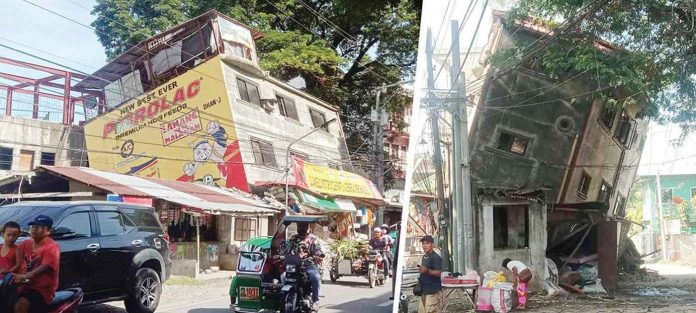
ILOILO City – A powerful earthquake jolted northern Luzon yesterday, damaging properties, triggering landslides, injuring at least 64 people, and killing at least five.
Are Western Visayans prepared should a similar tremor hit Region 6?
Preparations of local government units for earthquakes and other calamities like typhoons are being done with regularity, according to the Office of Civil Defense (OCD) in the region.
Western Visayas has been taking part in nationwide simultaneous earthquake drills, according to Cindy Ferrer, OCD-6 information officer and spokesperson of the Regional Disaster Risk Reduction and Management Council.
The region is no stranger to strong tremors. In Jan. 25, 1948 around 1:46 a.m. a magnitude 8.2 tremor jolted Panay Island and its sleeping people. It destroyed 55 Spanish-era stone churches and triggered a tsunami.
If an earthquake similar to this post-World War 2 tremor called “Lady Caycay” strikes today, do the people of Panay Island, specifically to this city, know what to do?
According to Ferrer, OCD-6 and partner agencies hold capacity-building training to prepare people for earthquakes, and provinces and highly urbanized cities have contingency plans.
On top of these, the region has “response assets” and 12 regional evacuation centers in the following areas:
* Barangay Tigayon, Kalibo, Aklan
* Barangay San Pedro, San Jose, Antique
* Barangay Milibili, Roxas City, Capiz
* Barangay Poblacion, Nueva Valencia, Guimaras
* Barangay Igtambo, San Miguel, Iloilo
* Barangay Gines, Zarraga, Iloilo
* Barangay Cabuguana, Carles, Iloilo
* Barangay Rizal, San Carlos City, Negros Occidental
* Barangay Lag-asan, Bago City, Negros Occidental
* Barrio Vista Alegre, Bacolod City, Negros Occidental, and
* Barangay Tabao, Sagay City, Negros Occidental.
“We also have existing earthquake response mechanisms such as response clusters, the Emergency Operation Center and Incident Management Team to manage the situation,” said Ferrer.
The 1948 quake “Lady Caycay” is considered one of the biggest earthquakes in the 500-year Philippine earthquake history.
The epicenter was reported to be between Antique’s towns of Tobias Fornier (called Dao at that time) and Anini-y.
The quaking went on for some three minutes, followed by a series of aftershocks which people then said they felt until 5:52 a.m.
For worst case scenarios, according to Ferrer, OCD-6 has an agreement with other regions for augmentation. Western Visayas’ “twinning regions” are the following:
* Region 7 for the first wave (regional office in closest proximity that is expected to readily provide augmentation)
* Region 5 and Region 8 for the second wave (relatively in close proximity and can likewise readily provide augmentation)
* Cordillera Autonomous Region and regions 1, 2, 3, 4A, 4B, 9, 10, 11, 12, the Caraga Administrative Region, and the Bangsamoro Autonomous Region in Muslim Mindanao for the third wave (provision of assistance that require ample time due to geographic situation)
As to the safety of structures against earthquake, Ferrer said building assessment is within the purview of the engineering department of every local government unit with technical assistance from the Department of Public Works and Highways.
The OCD-6, she added, had issued several memoranda directing local governments to conduct “integrity assessment” of the buildings in their areas.
In the “Lady Caycay” earthquake, of the 55 damaged Panay churches 17 totally collapsed, archives showed. These included the churches in Igbaras, San Miguel, Oton and Maasin, all in Iloilo province.
Belfries or church bell towers of San Joaquin, Alimodian, Tigbauan, Dueñas, Dumangas, Guimbal, Lambunao and the Iloilo City district churches in Jaro, Molo and Arevalo were also damaged.
The most prominent of these destroyed belfries was that of the Jaro Cathedral. The first storey of the tower made of limestone and bricks can still be seen today. Its second and third storeys crumbled, and were restored only in the 1990s.
“Lady Caycay” also severely damaged the church and convent of the town of Sta. Barbara, Iloilo.
“People should know about earthquakes and other hazards, what to do before, during and after these occur,” said Ferrer./PN



